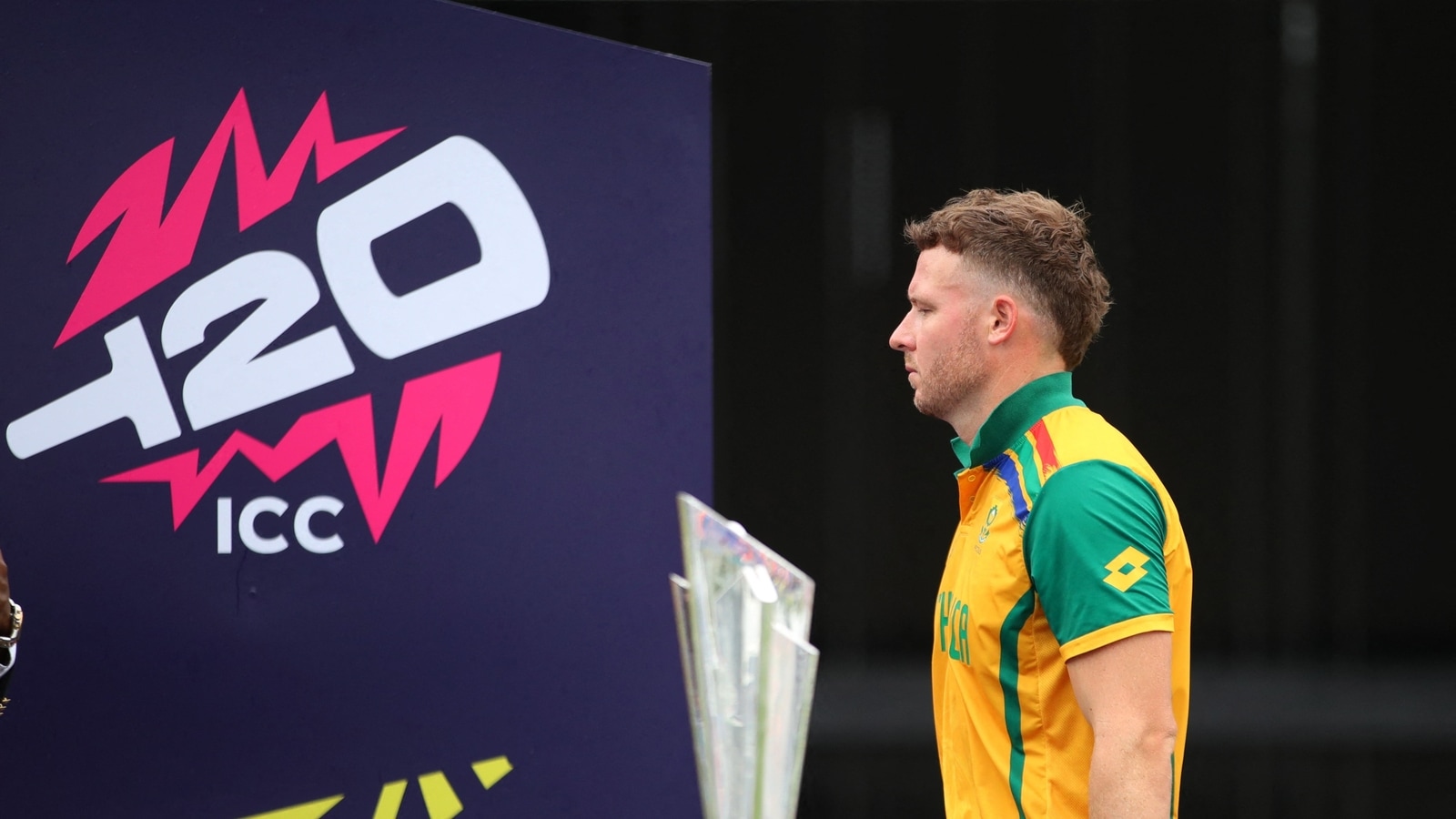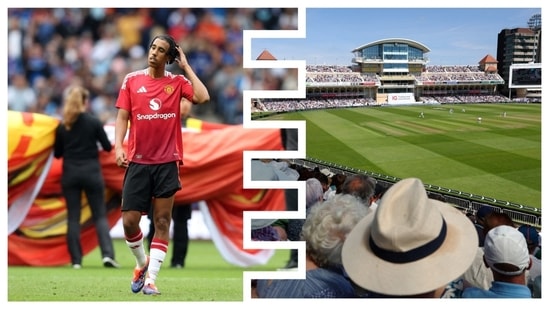“What’s cricket?”
The question would annoy Ali Khan in the beginning. But after spending a few years in the US, it started to feel normal. The Pakistan-born fast bowler is one of the 13 cricketers in the 15-member United States of America T20 World Cup squad who have settled in the US from other parts of the world for better opportunities, not necessarily in cricket alone.
Despite its large population, the USA, one of the most developed countries in the world, hardly had anything for the gentleman’s game. Locals would perceive it as an improvised version of baseball.
Things, however, started to turn in a different direction with the arrival of the Major League Cricket in July last year. “They know what cricket is now. You don’t have to explain. When I say ‘I play cricket’. They say, ‘Oh, we have seen it’,” Ali told Hindustan Times ahead of their World Cup opener against Canada.
Two other factors, apart from MLC’s success, played a major role in cricket gaining popularity in the States: ICC’s decision to announce them as the co-host of this year’s T20 World Cup and the recent performance of their cricket team.
The USA was in Division Four among the associate nations even until 2016. They moved up rapidly to Division Two and also gained ODI status in a couple of years.
Barely a week before the World Cup, they caused a major upset by beating Bangladesh in a three-match T20I series.
“In the last two or three years, I have seen exponential growth, especially with the national team doing well. We are advancing through the ranks, plus the Major League has created a buzz. And now we have the World Cup,” said former India U19 World Cupper and Ali’s new-ball partner Saurabh Netravalkar.
With success came strong pressure to pick their best eligible XI. The USA administrators embraced the expat route. Cricketers from the West Indies, India, Pakistan, and South Africa who had either lost hope of representing their respective countries or were settling in the States for other reasons were given immediate entry into the national team as soon as they met ICC’s new residency eligibility threshold of three years instead of four.
The result was obvious. It created a potential ground for junior development to be overshadowed in favour of expediency through ex-professionals migrating from overseas.
Aaron Jones and Stephen Taylor are the only cricketers in USA’s T20 World Cup squad who have come through the local system. The rest are all immigrants.
Another school of thought points directly towards locals’ lack of interest in the sport. Cricket is still largely played and followed by the scattered 4.5-million-strong South Asian diaspora that lives there in pockets. To get the natives interested, the first step is to spread awareness, and currently, inviting expats seems to be the way forward for the US.
But is it working? The answer is difficult. The Grand Prairie Cricket Stadium in Dallas has a capacity of 7000, making it one of the smallest venues to host a cricket World Cup match. Despite this, there are serious doubts about seeing empty seats in the T20 World Cup opener between the USA and Canada.
The only trace of sports in the streets of New York still belong to Major League Soccer, Major League Baseball and NBA.
The World Cup is definitely here, but the buzz isn’t quite there among locals.
The cricketers know the change will be slow. “There’s a lack of local Americans picking up the sport, but we are hoping that through the events like the World Cup and the facilities built around the country, knowledge is being shared everywhere… the future will be bright,” said Ali.

The infrastructure is also an issue. “Infrastructure is the biggest issue for cricket in this country. Many people play this sport, and the problem is that they have to play in local public parks. There is big grass and artificial turf. There are no pitches but mats. So training on those wickets, on those facilities for a big tournament, is not ideal,” Ali added.
Netravalkar, who settled in the US in 2015, pointed out the geographical barriers. “It’s a challenge to get everybody together simultaneously. A flight from New York to San Francisco is 6 hours. So it’s not sustainable to hold local tournaments in home-away format,” said the left-arm pacer.
“You can’t say that cricket is all over the States. It’s mostly in Dallas, Florida and New York. We have a stadium in New York, but it’s temporary. The proper stadium is in Dallas only or in Florida,” said left-arm spinner Noshtush Kenige, who played club cricket in Karnataka before moving to the USA and making his international.
Unlike Ali, Netravalkar, who are still hesitant to accept a full-time contract with USA Cricket – Netravalkar is a full-time engineer at Oracle – former Delhi cricketer Milind Kumar, who played first-class cricket in India till 2021, has a different opinion. He has moved to the States to play MLC and international cricket.
“It’s not true that we aren’t secured. I have moved here purely to play cricket only. I decided after seeing the vast improvements in the country. We are winning matches, new stadiums are being built. This can only mean a new road ahead,” he said.
Mixed feelings for former Indian cricketers
USA are in Group A with India, Pakistan, Canada and Ireland. The road won’t be easy but their preparation has been good. “We just finished the series with Bangladesh. That was a proper series where we could test ourselves. And before that we have had camps for the last two months,” said Kenjige.
Netravalkar, Kenjige, and Milind are among many USA cricketers who have strong roots in India. They will have a different feeling when they face the Rohit Sharma-led side on June 12.
“When we grew up, we were looking forward to playing for the country, but things changed, and now we are playing against, so it’s a different feeling. But on the ground, there are no friends or something like that,” said Milind, who has played 46 first-class matches in India.
“When I was in India, I wanted to wear the Indian jersey, but as you grow up and life happens, you move to a different country. And now the next best thing you can do is play against India. So I would take this anyway ten out of ten times,” said Kenjige.
For Netravalkar, it’s about meeting childhood friends. “I’ve been playing with them and against them in age group cricket since childhood. Entering the field, I frankly don’t know how I’m gonna feel, but I’m excited,” he said.




